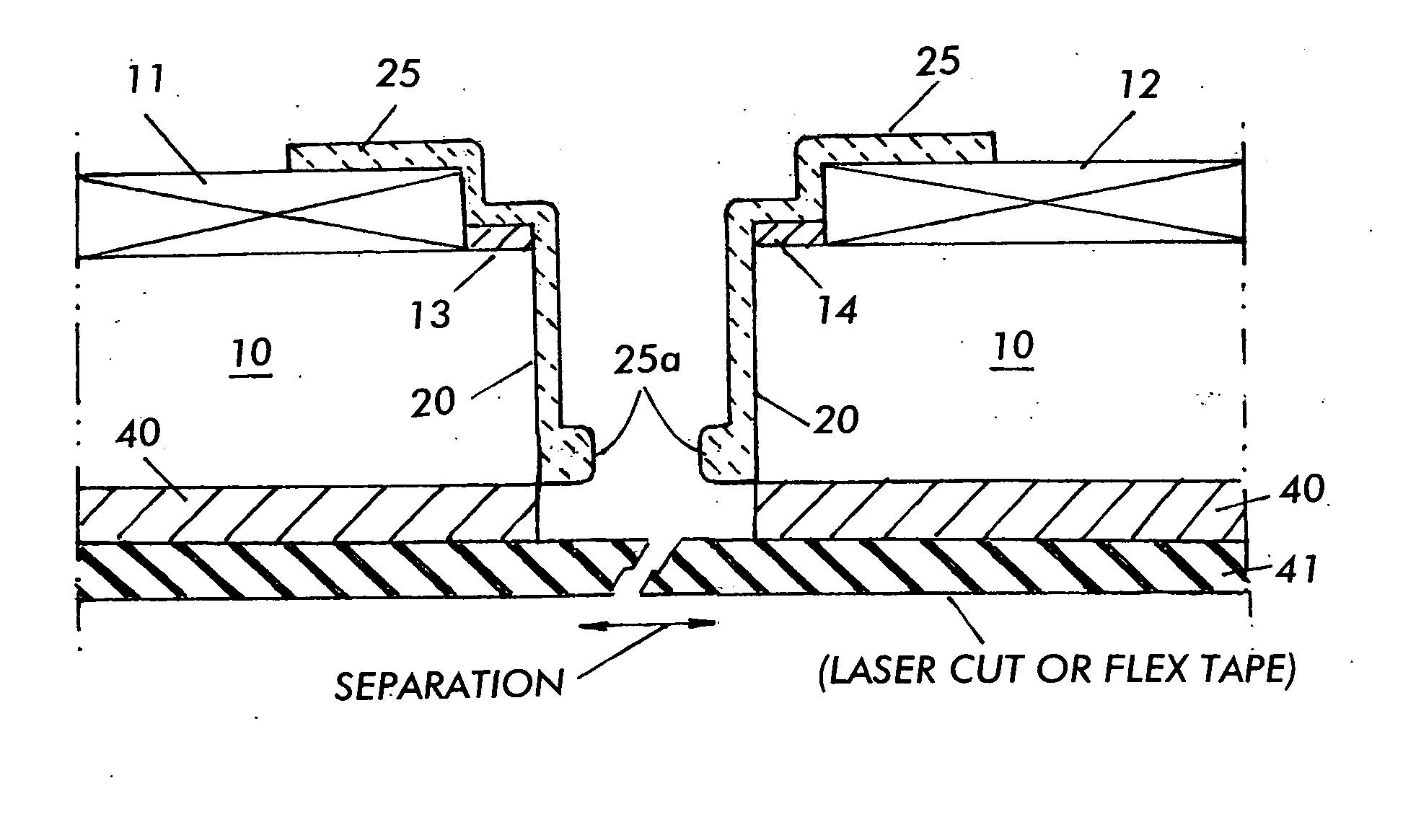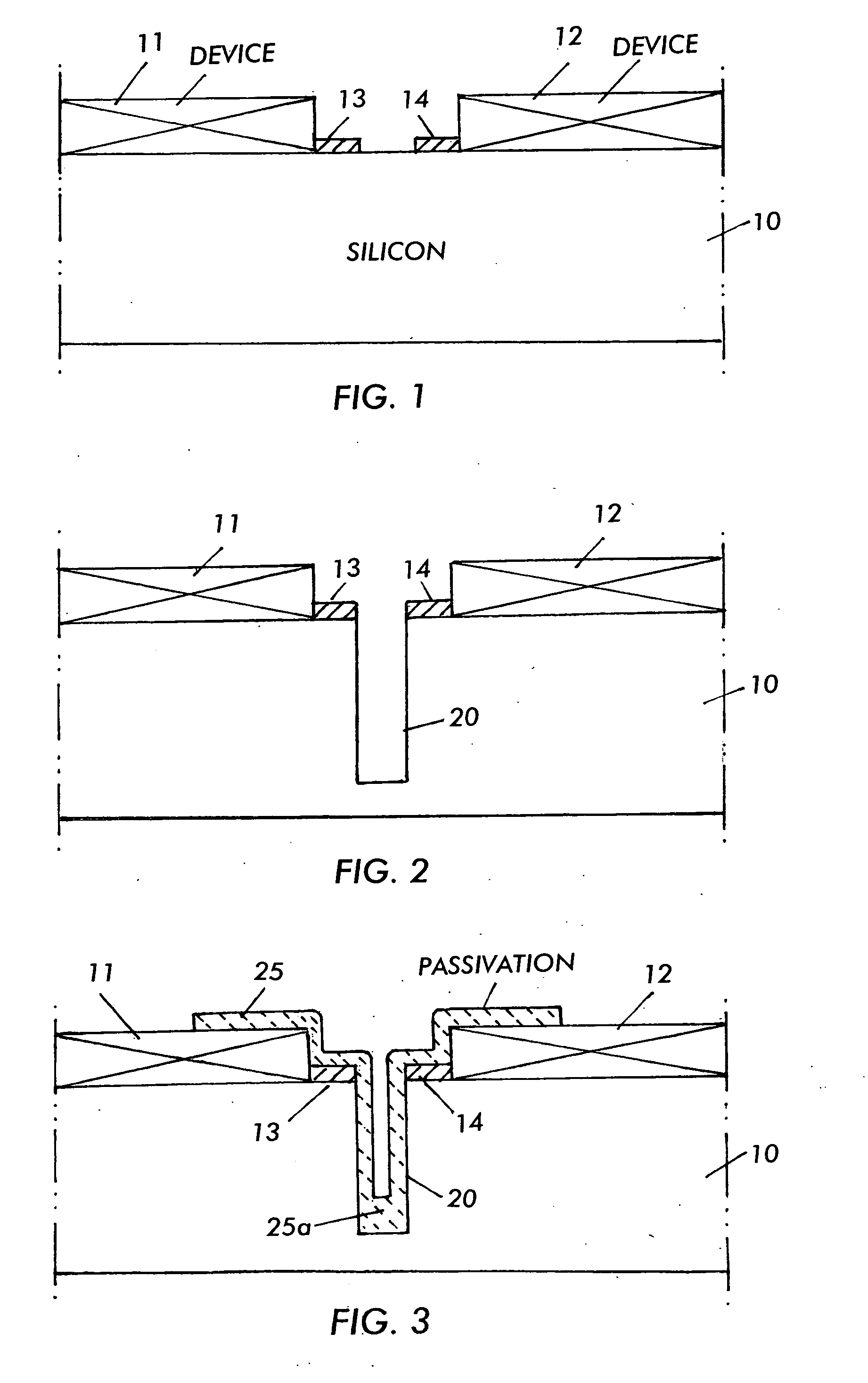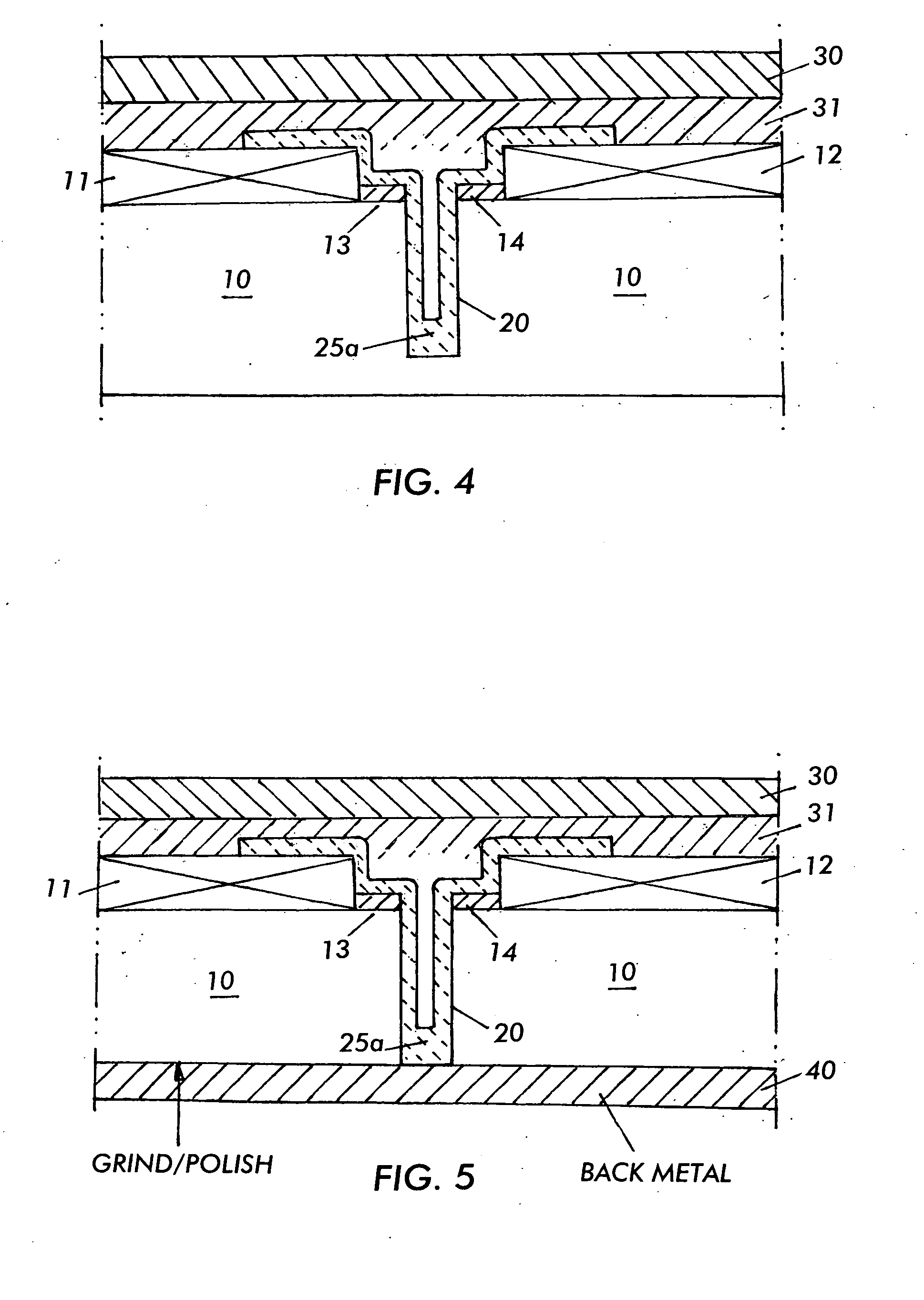Wafer singulation process
a technology of wafers and wafers, applied in the direction of semiconductor/solid-state device manufacturing, basic electric elements, electric instruments, etc., can solve the problems of time-consuming and costly process, singulation process can damage parts of dies, including the sides of dies,
- Summary
- Abstract
- Description
- Claims
- Application Information
AI Technical Summary
Problems solved by technology
Method used
Image
Examples
Embodiment Construction
[0015] A method of singulating the dies of the wafer will now be described with reference to FIGS. 1-6. A silicon wafer 10 has several laterally spaced devices, such as devices 11 and 12 of any desired device type and form necessary for the dies which they comprise. The wafer 10 can be of any desired material, such as silicon, GaN, SiC and the like. Any number of separate devices 11 and 12 can be provided as part of the wafer 10, such as identical vertical conduction MOSFETs with a planar or a trench topology.
[0016] A mask layer is then deposited along the first side of the wafer and a portion of the mask is removed to leave mask deposits 13 and 14, thus exposing the top of the wafer 10 as an etch window so that a trench 20 may be etched. FIG. 2 shows trench mask portions 13 and 14 between devices 11 and 12. Alternatively, the trench may be cut instead of etched. Cutting could be easily performed since a street could be cut along the entire length of the wafer 10 to the desired dep...
PUM
 Login to View More
Login to View More Abstract
Description
Claims
Application Information
 Login to View More
Login to View More - R&D
- Intellectual Property
- Life Sciences
- Materials
- Tech Scout
- Unparalleled Data Quality
- Higher Quality Content
- 60% Fewer Hallucinations
Browse by: Latest US Patents, China's latest patents, Technical Efficacy Thesaurus, Application Domain, Technology Topic, Popular Technical Reports.
© 2025 PatSnap. All rights reserved.Legal|Privacy policy|Modern Slavery Act Transparency Statement|Sitemap|About US| Contact US: help@patsnap.com



